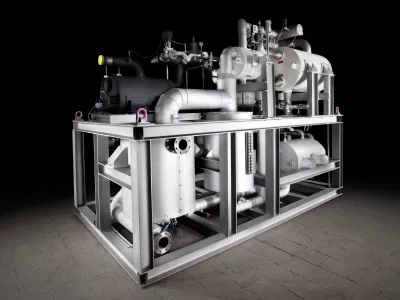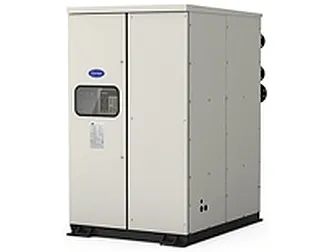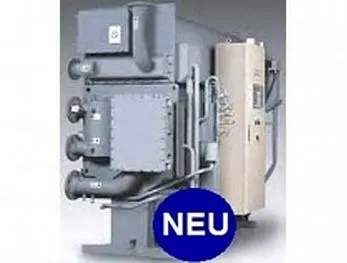The ammonia / water absorption principle in refrigeration
Applications
Ammonia / water absorption chiller
The ammonia / water system
Ammonia is the refrigerant and water is the absorbent. On the left side of the bordered field in the picture is a circuit with an internal heat exchanger for condensate supercooling / steam overheating. It sends vaporized low-pressure refrigerant - in this case ammonia - into the system in the framed field and receives
Contents
Product Ad
Image

Absorption chiller AKM type A3 to A9 with CE marking for cooling capacities up to 1 MW. Machine compactly manufactured on a base frame for indoor or outdoor installation, ready for connection and operation, including control cabinet and Siemens SPS S7
Jobs
Mounting
Mechanic/Welder (m/f/d) at GEA
We are looking for three mechanics/welders (m/f/d) at our Berlin location.
Image

GEA Refrigeration Germany GmbH
Berlin, Germany
Fulltime
Project management refrigeration technology
Commercial Employee Order Processing in Engineering (m/f/d)
To strengthen our team, we are looking for a commercial employee to handle engineering projects as soon as possible.
Image

MTA Deutschland GmbH
Nettetal, Germany
Fitter refrigeration technology
MTA Refrigeration Technician (m/f/d) in Customer Service for Baden-Württemberg
To strengthen our team for the Stuttgart region, we are looking for you as a Refrigeration Technician (m/f/d) for our customer service.
Image

MTA Deutschland GmbH
Nettetal, Germany
Fulltime
Get in Touch with the Author
If you have any questions or would like additional information, the author of this article is happy to assist you. Simply use the options below to get in touch directly.
Related Products
Image

Absorption chiller AKM type A3 to A9 with CE marking for cooling capacities up to 1 MW. Machine compactly manufactured on a base frame for indoor or outdoor installation, ready for connection and operation, including control cabinet and Siemens SPS S7
Image

Nominal cooling capacity 90-176 kW
Image

Rated cooling capacity: 83-3956 kW
Image

17.5 kW to 352 kW cooling capacity
Related Articles
Enhancing Defrosting Efficiency in Cold Storage Facilities
Optimizing Cooling Operations and Saving Energy During Defrosting with Mechanical Solutions
12°C – Hot Gas Defrosting for Evaporators
Efficient Defrosting in Industrial Freezer Warehouses
Efficient Cooling for Data Centers
Innovative solutions for optimizing server cooling. Learn more and reduce energy costs.
How do you calculate the cooling capacity?
The cooling capacity is calculated by changing the energy transferred in the cooling process.
MIXING HEAT TRANSFER MEDIA WITH WATER
In general, no two different heat transfer media may be mixed with each other. Only when mixing with water can full frost and corrosion protection still be guaranteed.
Refrigeration optimization and production planning according to electricity spot price
Use AI to optimize refrigeration, reduce electricity consumption by continuously calculating system mass and energy balance to control set points.
Controlled Atmosphere Storage
The market price for fruit and vegetables is primarily determined by quality, supply and demand. But how do you maintain the best quality in your products until the most suitable moment? Simple: by opting for storage under Controlled Atmosphere (CA) conditions.

